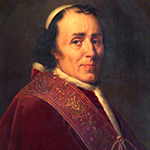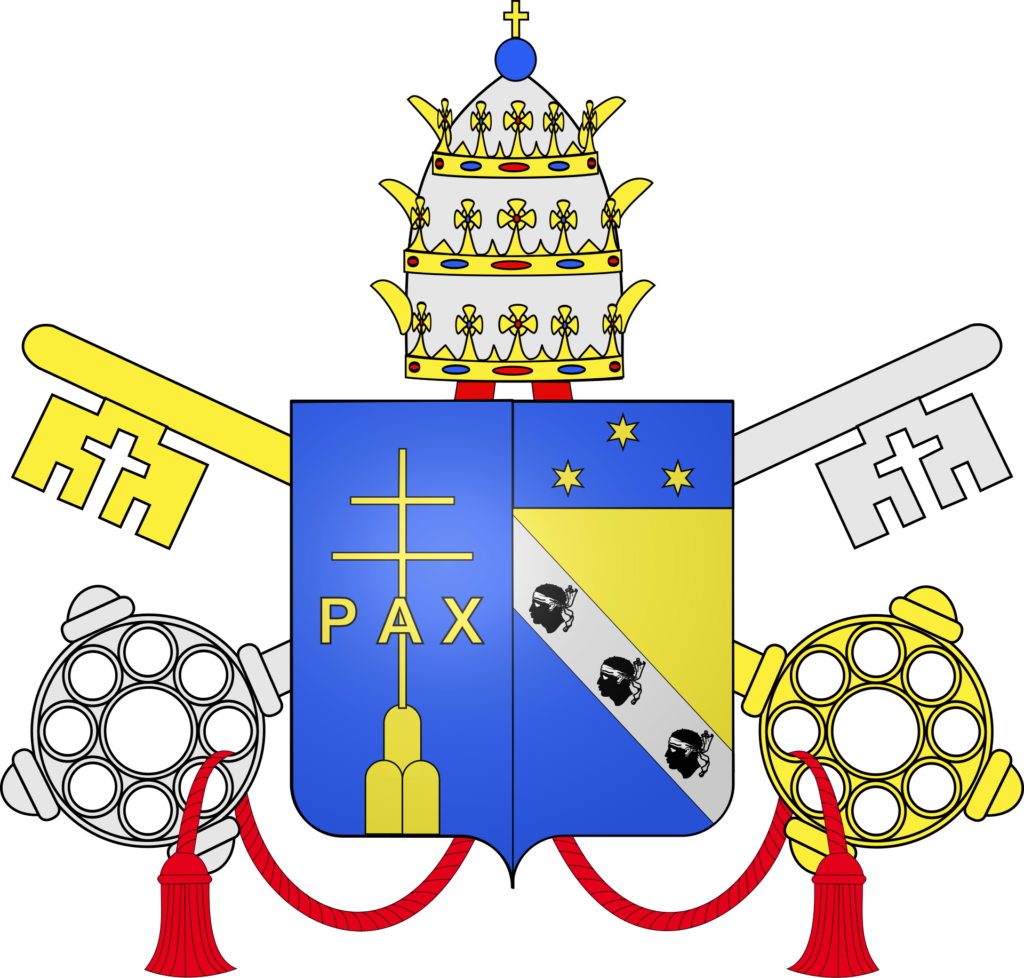
Pope Pius VII, born Barnaba Niccolò Maria Luigi Chiaramonti in 1742, he was the 251st leader of the Catholic Church and the seventh among that lot to take the name “Pius.” He ascended to the papacy in a tumultuous period marked by the aftermath of the French Revolution and the rise of Napoleon Bonaparte.
His pontificate, from 1800 to 1823, was a time of significant challenges and profound changes for the Catholic Church, including struggles for autonomy against political powers, the reestablishment of the Church in France through the Concordat of 1801, and his own dramatic imprisonment.
This piece aims to explore the resilient and diplomatic tenure of Pope Pius VII, a leader whose spiritual guidance and political acumen steered the Church through one of the most turbulent periods in European history.
From his early life in Cesena to his enduring legacy as a pope who faced down Napoleon and worked tirelessly to restore and reinforce the Church’s position in the world, join us as we delve into the story of a pontiff whose faith and fortitude left an indelible mark on the history of the Catholic Church.
Pope Pius VII Coat of Arms

Life Before the Papacy.
Barnaba was the youngest of Count Scipione Chiaramonti’s sons. Due to some extended familial connections through his maternal grandfather, the Marquess Ghini, he was related to Pope Pius VI.
Much like his other brothers, he attended Ravenna’s Collegio dei Nobili; unlike his brothers whom joined the Order of Saint Benedict, he chose to join Cesena’s Abbey of Santa Maria del Monte at age 14.
Two years later, he would become a professed member, taking the name Gregorio. He then taught at Benedictine colleges within Parma and Rose before becoming fully ordained into the priesthood on September 21st, 1765.
After his relative Giovanni Angelo Braschi became Pope Pius VI, Chiaramonti became his personal confessor. Come 1776, Pius VI made him the honorary abbot in commendam of Rome’s Monastery of Sant’Anselmo, the very monstery Chiaramonti had been teaching within.
This was greeted with complaints by the locals, as it did not seem to fit the Rule of St. Benedict. In 1782, Pius VI would elevate Chiaramonti to Bishop of Tivoli. A little over two years later, he was elevated to Cardinal-Priest of San Callisto and then Bishop of Imola. He maintained the office of this last position until 1816.
When the French Revolutionary Army invaded in 1797, Cardinal Chiaramonti pressed his diocese to submit to the new regime. In that year’s Christmas homily, he reminded his followers that democracy did not opposite Catholicism.
Papal Legacy
- He allegedly performed a miraculous levitation to the altar during the feast of the Assumption in 1811.
- He established a handful of new dioceses along the east coast of the United States, as well as within Cincinnati.
- He commended the American involvement of the First Babary War as having done more work for God than any other Christian power.
- He despised secret organizations like the Freemasons and Carbonari, excommunicating anyone found to have connections to such groups.
- He instigated archaeological investigations in Ostia and even restored the Arch of Constantine. He also commissioned the construction of Monte Piscio’s obelisk.
- His signature on the Concordat of 1801 guaranteed religious freedom to all French Catholics.
List of Events In The Life of Pope Pius VII (born Barnaba Niccolò Maria Luigi Chiaramonti)
| Date | Age | Event | Title |
|---|---|---|---|
| 14 Aug 1742 | Born | ||
| 20 Aug 1758 | 16.0 | Professed | Member of Order of Saint Benedict |
| 21 Sep 1765 | 23.1 | Ordained Priest | Priest of Order of Saint Benedict |
| 16 Dec 1782 | 40.3 | Appointed | Bishop of Tivoli, Italy |
| 21 Dec 1782 | 40.3 | Ordained Bishop | Bishop of Tivoli, Italy |
| 14 Feb 1785 | 42.5 | Appointed | Bishop of Imola, Italy |
| 14 Feb 1785 | 42.5 | Elevated to Cardinal | |
| 27 Jun 1785 | 42.8 | Appointed | Cardinal-Priest of San Callisto |
| 14 Mar 1800 | 57.5 | Elected | Pope (Roma, Italy) |
| 21 Mar 1800 | 57.6 | Installed | Pope (Roma, Italy) |
| 8 Mar 1816 | 73.5 | Resigned | Bishop of Imola, Italy |
| 20 Aug 1823 | 81.0 | Died | Pope (Roma, Italy) |
Quick Facts About Pope Pius VII.
- He was born within Cesena, then a city within the Papal States, on August 14th, 1742.
- His full given name was Barnaba Niccolò Maria Luigi Chiaramonti.
- He died on August 20th, 1823.
- While his health hit a steep decline upon hitting the age of 80, a disastrous fall on July 6th of 1823 left him with a fractured hip that he never truly recovered from. Indeed, he was left bound to his bed and would slip in and out of consciousness, muttering the names of cities he had visited while in French custody until August 20th.
- His papacy began on March 14th, 1800.
- His papacy ended with his life.
- His papal successor was Leo XII.
Six Interesting Facts About Pope Pius VII.
- His papal motto means “Rapacious eagle” in English.
- He spoke English, French, Italian and Latin.
- Due to circumstances regarding Pius VI’s death, it would be six months his papacy began.
- His canonization began in 2007.
- He excommunicated Napoleon I when the Napoleonic Wars lead to re-invading the Papal States.
- He condemned the monetarily lucrative slave trade.